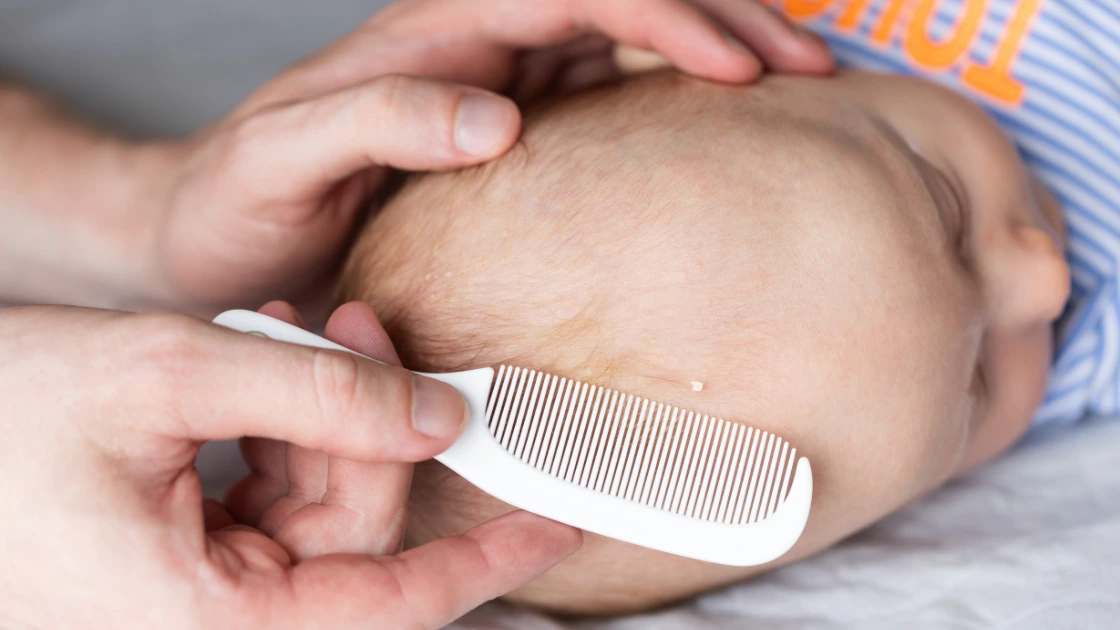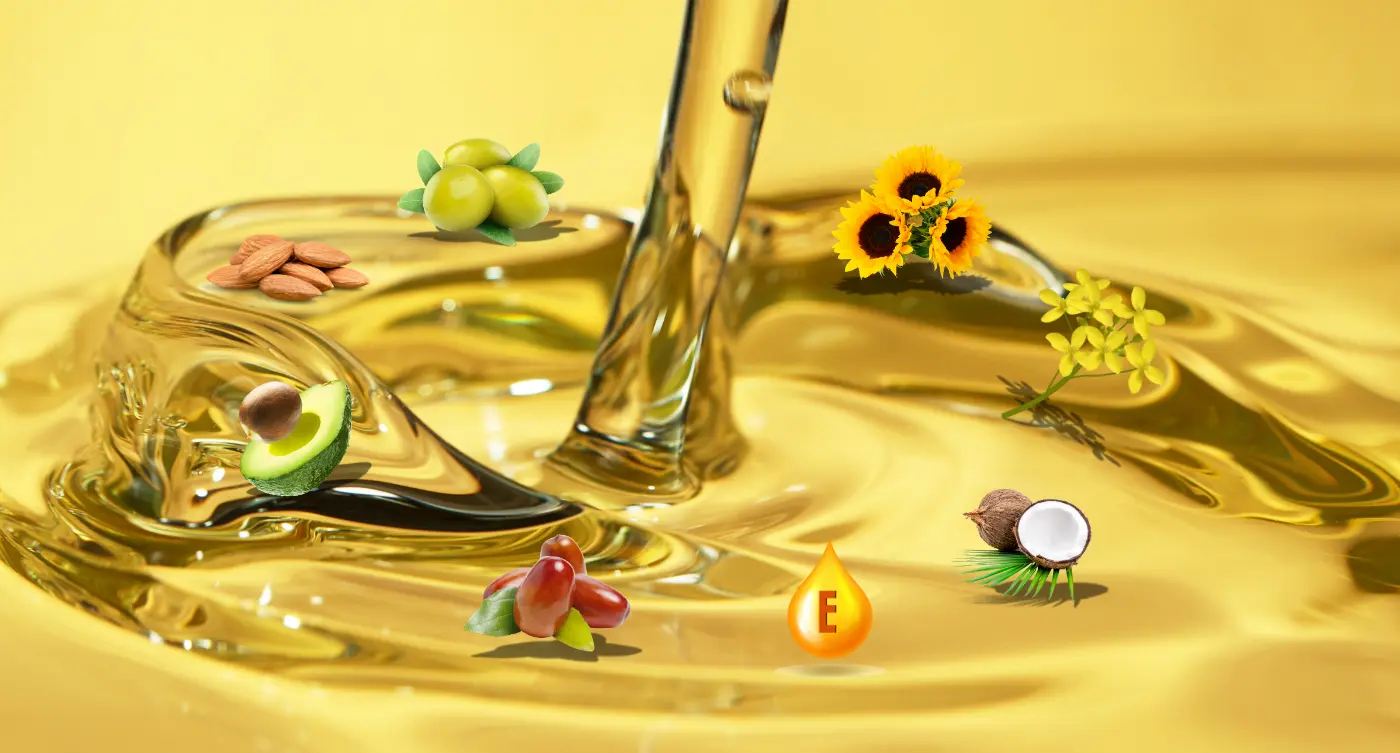Baby oil is a must-have in every parent’s baby care routine. Known for its moisturizing benefits and gentle formulation, baby oil keeps your baby’s delicate skin soft, supple, and healthy.
Table of Contents
- What Is Baby Oil and Why Is It Used?
- Benefits of Using Baby Oil Over Time
- Baby Oil for Cradle Cap and Diaper Rash Relief
- Baby Oil in Bath Time Routines
- Layering Products With Baby Oil
- Is Baby Oil Good for Baby Hair and Scalp?
- Using Baby Oil for Baby Acne and Dry Skin
- Baby Oil for Infant Eczema: Should You Use It?
- Is Baby Oil Safe for Baby’s Face?
- More Benefits of Using Baby Oil Gel
- Understanding Baby Oil Ingredients
- Storing and Using a Baby Oil Bottle Safely
- Conclusion
What Is Baby Oil and Why Is It Used?

What Is Baby Oil and Why Is It Used? When choosing a baby oil, look for one that is specifically designed for infants and is free from harsh chemicals or fragrances. Baby oil is a light, hydrating oil designed specifically for babies’ sensitive skin. It typically contains mineral oil or plant-based oils and often includes added fragrance or botanical extracts for soothing effects.
Common Uses of Baby Oil
- Moisturizing after a bath
- Soothing cradle cap
- Gentle baby massage
- Preventing diaper rash or dryness
Baby oil is incredibly versatile and can be used throughout the day, empowering parents in their caregiving. Many parents apply it right after bath time to lock in moisture, while others use it to treat dry patches on elbows, knees, and cheeks. Some even add a few drops to bathwater for all-over hydration.
Baby oil can also be used to get rid of crusty cradle cap flakes by loosening the flakes. Just a little bit used before shampooing can help to lift and loosen flakes in a gentle manner. This makes it is a must-have for skincare and also for scalp care.
Benefits of Using Baby Oil Over Time
Baby oil has both short-term and long-term benefits! It supports the elasticity of the skin, prevents flakiness, and strengthens the skin barrier of your baby, which is necessary especially for a baby with a sensitive and dry skin type.
Moms and dads who use oil on their little ones as part of a daily routine already know with regular use, skin can feel baby soft and look healthier and more glowing. This prevents breakouts and itching and provides more comfort.
Baby Oil for Cradle Cap and Diaper Rash Relief
Many babies suffer from common skin issues like cradle cap and diaper rash in their early months. Using oil as a part of a consistent skincare routine can soothe, prevent, and treat these conditions naturally.
Cradle Cap Treatment with Baby Oil

Apply a small amount of baby oil to the baby’s scalp, let it sit for 10–15 minutes to soften the flakes, and gently comb through the hair with a soft baby brush. Follow with a mild baby shampoo to rinse away the oil and loosened flakes. Repeat 2–3 times a week as needed.
This method works best when used regularly and gently. Always ensure you’re using clean hands or tools to avoid introducing any bacteria to your baby’s scalp.
Baby Oil for Diaper Rash Prevention
After cleaning and drying your baby’s bottom, apply a thin layer of oil to create a protective barrier that reduces friction and moisture buildup. Although oil is not a replacement for zinc-based diaper creams, it can serve as a preventative measure for mild cases.
It’s also beneficial between diaper changes to keep the skin moisturized and reduce redness. Choose baby oil formulas that are fragrance-free and tested for sensitive areas.
Baby Oil in Bath Time Routines
Adding baby oil to bath water is a gentle way to keep your baby’s skin hydrated during cleansing. Mix a few drops into the bathwater to allow the oil to coat and nourish the skin. This method is particularly helpful during winter when skin tends to dry out quickly due to indoor heating and lower humidity levels.
Some pediatricians recommend combining a few drops of baby oil with a moisturizing cleanser for a two-in-one soothing experience. Always ensure your baby’s skin is patted dry after the bath without rubbing harshly. The thin layer of oil keeps the moisture captured, making the skin feel soft and supple throughout the day.
Layering Products With Baby Oil
To maximize moisture retention, consider layering baby oil over a lightweight baby lotion. The lotion hydrates the skin, while the oil seals it in. This is especially useful at bedtime to maintain hydration throughout the night.
Avoid layering too many products with active ingredients, especially if your baby has sensitive skin. A simple routine that includes oil and a mild lotion often works best.
Is Baby Oil Good for Baby Hair and Scalp?
Baby oil isn’t just for the body—it can also benefit your baby’s hair and scalp. Many parents use oil to:
- Tame flyaways and frizz
- Add a healthy shine to the hair
- Moisturize dry patches on the scalp
Apply a few drops of oil to your hands, rub them together, and gently smooth over your baby’s hair. For scalp care, apply the oil with your fingertips and massage in small circular motions. It’s a natural way to promote circulation while nourishing the scalp.
Regular scalp massage with oil can also strengthen the roots of hair and help in reducing dryness. However, ensure that you use oils that are easily washable and don’t leave behind residue.
Using Baby Oil for Baby Acne and Dry Skin
Some newborns develop baby acne or rough dry spots due to exposure to new environments. Baby oil, especially when made with jojoba or coconut oil, can help balance skin moisture and reduce redness.
Use a minimal amount and apply only on clean, dry skin. Always perform a patch test to rule out any sensitivities before applying to a larger area. Using oil can soothe inflamed skin and promote healing by creating a breathable moisture barrier.
Avoid using baby oil on inflamed or infected areas without medical supervision. For mild skin dryness, a routine involving a gentle cleanser and light oil massage works wonders.
Baby Oil for Infant Eczema: Should You Use It?
Infant eczema is a more serious skin concern that requires gentle, non-irritating products. While baby oil is not a cure for eczema, oils like sunflower or jojoba can help manage flare-ups by maintaining skin barrier integrity.
Look for oil labeled as hypoallergenic, fragrance-free, and specifically made for sensitive or eczema-prone skin. Consult your pediatrician before trying any new product on inflamed skin.
Introduce oil slowly into the skincare routine and observe how your baby’s skin responds over time. For some, using oil once daily as a top layer over medicated creams helps in boosting barrier repair.
Is Baby Oil Safe for Baby’s Face?

The skin on a baby’s face is extremely delicate, so it’s important to choose your baby oil carefully. Fragrance-free, non-comedogenic oils like jojoba or grapeseed are ideal for moisturizing cheeks or soothing dry patches around the mouth and nose, providing parents with confidence in their choice.
Avoid using oil near the eyes, lips, and nostrils. Always use clean hands or cotton swabs to apply, and never use oils that contain potential allergens or irritating additives. Use sparingly, and pat gently to avoid disturbing the natural skin barrier.
If using oil as part of a nighttime routine, apply it after cleaning the face with lukewarm water and a soft washcloth. It helps calm the skin before bed and supports overnight repair.
More Benefits of Using Baby Oil Gel
Baby oil gel provides gentle all-over moisture for baby’s skin and has a unique texture, so it is easy to apply. It’s thicker than liquid oil, so it’s easier to apply, stays on longer, and of course, one in the morning and one at night. Because it’s semi-solid, it isn’t running all over the place and won’t make a mess if you need to take it with you or use it on the go.
One of the great things about oil gel is that it stays put. It’s great for overnight hydration, especially in dry seasons. Many parents will dab some oil gel on knees, elbows, or other rough spots that their baby has to make sure the skin stays smooth and nourished throughout the night.
A few brands add aloe vera or shea butter to their oil gel for added soothing. These are perfect for post-bath use, locking in the moisture while soothing the skin.
Understanding Baby Oil Ingredients

Picking the best baby oil begins with knowing what’s in the oil. Some oils are based on minerals, others are derived from natural plants. Here’s a comparison of popular ingredients in baby oils, traditional and natural:
Ingredient Type Benefits Considerations
Mineral Oil Traditional Forms a barrier to lock in moisture Petroleum-derived; choose highly purified versions
Ingredient | Type | Benefits | Considerations |
Mineral Oil | Traditional | Forms a barrier to lock in moisture | Petroleum-derived; choose highly purified versions |
Fragrance | Traditional | Provides a mild, pleasant scent | May cause irritation in sensitive skin |
Vitamin E (Tocopherol) | Traditional/Natural | Antioxidant; supports skin healing | Rare allergic reactions in high doses |
Coconut Oil | Natural | Antibacterial, antifungal; deeply moisturizing | Solid at room temp; test for allergies |
Jojoba Oil | Natural | Mimics natural skin oils; absorbs easily | Hypoallergenic, excellent for sensitive skin |
Sunflower Oil | Natural | High in linoleic acid; supports skin barrier | Lightweight; ideal for daily use |
Almond Oil | Natural | Rich in vitamins and fatty acids; great for massage | Avoid if there’s a nut allergy |
Avocado Oil | Natural | Nourishes dry or peeling skin; rich in vitamins A, D, E | Thicker texture; better for winter months |
Grapeseed Oil | Natural | Antioxidant-rich; light texture | Non-greasy, suitable for facial use |
When reviewing oil ingredients, opt for products with short, clean ingredient lists and those labeled as hypoallergenic or dermatologically tested. Certified organic oils are ideal for eco-conscious parents seeking purity and transparency in baby skincare.
Parents often wonder: what is better for babies—coconut oil or jojoba oil? Both are excellent natural choices and offer unique skin benefits.
- Coconut oil is antibacterial and deeply moisturizing. It’s a great choice for dry skin and is often used to treat diaper rash and cradle cap.
- Jojoba oil closely mimics the skin’s natural sebum. It’s lighter, absorbs quickly, and is less likely to clog pores—perfect for sensitive skin.
Other oils such as sunflower and almond oil also deserve attention. Sunflower oil is rich in linoleic acid and safe even for premature babies. Almond oil is ideal for baby massage, though parents should be cautious if there’s a nut allergy risk.
The final decision to make the choice of coconut oil, jojoba oil, or any other oil lies in the particular needs of your baby and his sensitivity.
Storing and Using a Baby Oil Bottle Safely
Your baby oil packaging does double duty when it comes to hygiene and convenience. Choose bottles with a tight-fitting cap or a pump for minimum risk of contamination and spills.
When using a oil bottle, always make sure your hands are clean before dispensing to avoid contamination of the contents with germs. Keep the bottle in a cool, dark spot not exposed to sunlight to keep the powder effective and fresh.
Also, always check the manufacturing and expiration date. Even though boil has a long shelf life, it’s wise to replace an open oil bottle every 12–18 months to ensure safety and quality.
Does Baby Oil Expire?
Yes, like all skincare products, oil can expire. While most oils have a long shelf life—often up to three years when unopened—exposure to heat, light, or contaminants can reduce their effectiveness over time.
How to Tell if Your Baby Oil Has Expired
- Change in color or smell: A rancid or off smell is a strong indicator.
- Cloudy appearance: Pure oils should be clear or slightly golden, not milky.
- Skin irritation: If your baby experiences redness or rash after using the oil, it may have degraded.
For best results, always:
- Check the expiry or manufacture date on the oil bottle
- Store in a cool, dry, dark place
- Keep the cap tightly sealed between uses
If you’re unsure, it’s better to discard older oils and choose fresh, high-quality oils that suit your baby’s skin needs.
Conclusion
Don’t forget to select the appropriate products for your baby’s skin type, consult a pediatrician for sensitive skin issues, and then enjoy the incredibly precious bonding moments you experience during an oil massage.
Understanding oil ingredients, proper storage, and usage tips will make sure to have a soft, nourished, and protected little one from head to toe.
Just remember to select products for your baby’s skin type (and ask a pediatrician if your baby has sensitive skin), and then bask in the adorableness of those cute baby oil moments.
Stay tuned with Pregnancy Must. Wishing you a happy and confusion-free parenthood!
Explore more-
